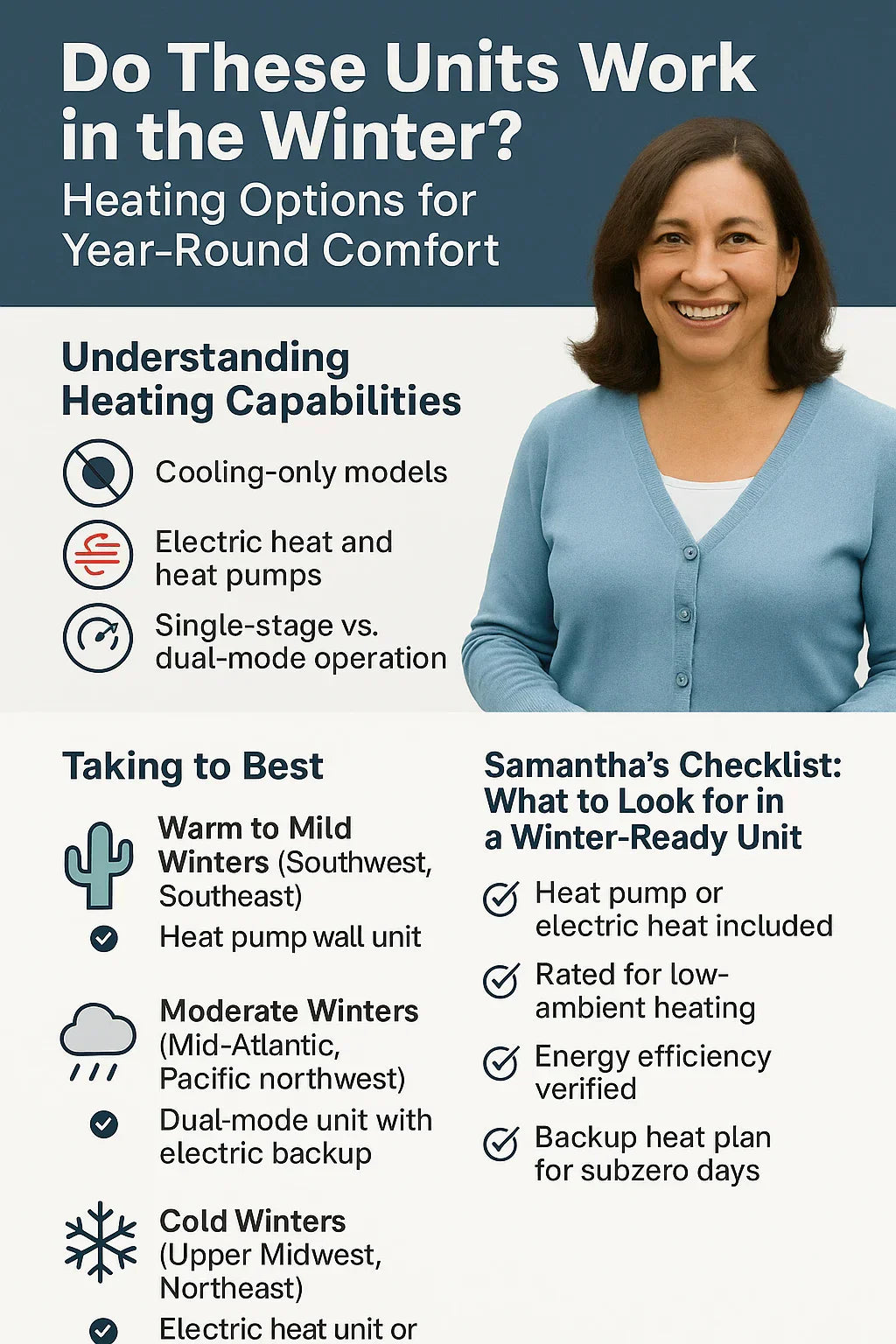🏡 Introduction: What Happens When Winter Hits?
Through-the-wall air conditioners are often associated with summertime comfort — that refreshing cool breeze after a long day. But as winter rolls in and temperatures plummet, many homeowners begin to wonder: “Can my wall unit keep me warm too?”
The short answer: Some can. But not all through-the-wall ACs are created equal when it comes to heating.
In this guide, we’ll break down:
-
Which units are built for cold weather
-
The difference between electric heat and heat pumps
-
Energy efficiency considerations
-
Real-world performance in different climates
-
What to look for if you want true year-round comfort
Let’s dive in.
🌡️ Understanding the Heating Capabilities of Through-the-Wall ACs
🧊 1. Not All Wall Units Have Heat Functions
Many standard through-the-wall ACs are cooling-only units. If you bought your unit solely for summer use, chances are it doesn’t include a built-in heat source.
However, several models today come with:
-
Electric resistance heat
-
Heat pump functionality
🔌 2. What Is Electric Resistance Heat?
Electric wall units that include heat typically use electric resistance coils. These work like a space heater built into the unit. When activated, the coils heat up and a fan blows warm air into the room.
Pros:
-
Simple technology
-
Works even in very cold temperatures
-
Affordable initial cost
Cons:
-
Less efficient than heat pumps
-
Higher electric bills in cold months
🔗 Learn more about how electric resistance heating works (U.S. DOE)
♻️ 3. What Is a Heat Pump Wall Unit?
Heat pump wall units can both cool and heat by reversing their refrigeration cycle. These are much more efficient in moderate winter climates but can struggle in sub-freezing temperatures.
Pros:
-
Energy efficient
-
Lower long-term cost
-
Excellent for shoulder seasons and mild winters
Cons:
-
Can lose effectiveness in temps below 25°F
-
May need backup heat in cold climates
🏘️ Best Heating Options by Climate
🌵 Warm to Mild Winters (Southwest, Southeast)
✅ Best choice: Heat pump wall unit
-
These areas rarely dip below freezing
-
A heat pump can easily handle most of the heating load
-
Look for units with Energy Star certification and high HSPF ratings
🌦️ Moderate Winters (Mid-Atlantic, Pacific Northwest)
🔄 Best choice: Dual-mode unit (heat pump + electric backup)
-
You’ll benefit from efficiency most of the year
-
During a cold snap, the electric heat kicks in
-
Consider a unit with a programmable thermostat and freeze protection
❄️ Cold Winters (Upper Midwest, Northeast)
🔥 Best choice: Electric heat unit (or use wall AC with a supplemental heater or furnace)
-
Heat pumps alone may not keep up
-
Choose a unit rated for low ambient operation
-
Alternatively, pair the wall AC with a baseboard heater or ductless mini split for heating
🧪 Key Performance Ratings That Matter
⚙️ EER: Energy Efficiency Ratio (Cooling Only)
This tells you how efficient the unit is at cooling. The higher the EER, the better. However, for winter operation, this is less relevant.
🌀 CEER: Combined Energy Efficiency Ratio
This measures overall performance and standby energy use — important for year-round systems.
-
Look for CEER ratings above 9.5 for balanced efficiency.
🥶 HSPF: Heating Seasonal Performance Factor
Used primarily with heat pumps, this tells you how efficiently the unit heats.
-
8.5+ HSPF = high-efficiency heating
🔗 ASHRAE breakdown of heating and cooling efficiency ratings
🧰 Installation Tips for Cold-Weather Operation
🧱 1. Insulate the Wall Sleeve
If your unit is installed through an exterior wall, heat loss can occur around the edges. Choose an insulated wall sleeve and weatherstrip any gaps to prevent drafts.
🧊 2. Use a Drain Pan Heater (for Heat Pumps)
In freezing climates, a heat pump's drain pan can ice over. Some advanced units offer built-in heaters or you can install one to prevent damage.
📐 3. Ensure Proper Sizing
Too small of a unit = inadequate heat
Too large = short cycling and inefficiency
Use the BTU per square foot rule:
-
20–25 BTUs per square foot for heating in moderate climates
-
30+ BTUs per square foot in colder regions
🛍️ Best Through-the-Wall Units for Year-Round Use (2025 Picks)
🔷 GE AJEQ12DCF
-
12,000 BTU cooling + electric heat
-
Reliable performance in winter
-
Ideal for small to mid-size rooms
🔶 Friedrich Uni-Fit UCT10A30A
-
10,000 BTU heat pump + backup electric heat
-
HSPF-rated for mild to moderate winters
-
Compact fit for tight wall spaces
🔳 LG LT1237HNR
-
Heat pump & resistance combo
-
Designed for low ambient heating
-
Smart features and Energy Star rated
💡 Smart Tips from Samantha
💬 “I live in North Carolina, and I needed a unit that wouldn’t spike my bills in winter. I chose a heat pump wall unit from Friedrich — it works great down to 30°F. On extra cold nights, I keep a small baseboard heater in my bedroom just in case.”
— Samantha R., Homeowner
-
Use a smart thermostat or plug-in timer to limit usage when you're out
-
Clean your filters regularly — dirty filters reduce both cooling and heating performance
-
Install thermal curtains to reduce overnight heat loss
📝 Final Verdict: Can These Units Work in the Winter?
Yes — many through-the-wall AC units can work in winter… but only if you choose the right one.
| Climate | Recommended Unit Type |
|---|---|
| Warm (FL, TX, AZ) | Heat pump wall unit |
| Moderate (CA, VA, OR) | Heat pump + electric |
| Cold (NY, MN, CO) | Electric heat or supplemental heater |
If you want true year-round comfort from one unit, look for:
-
Dual heating modes
-
Good HSPF and CEER ratings
-
Freeze protection and wall sleeve insulation
In the next topic we will know more about: How to Maintain Your Through-the-Wall AC: Filters, Coils, and Seasonal Tips







